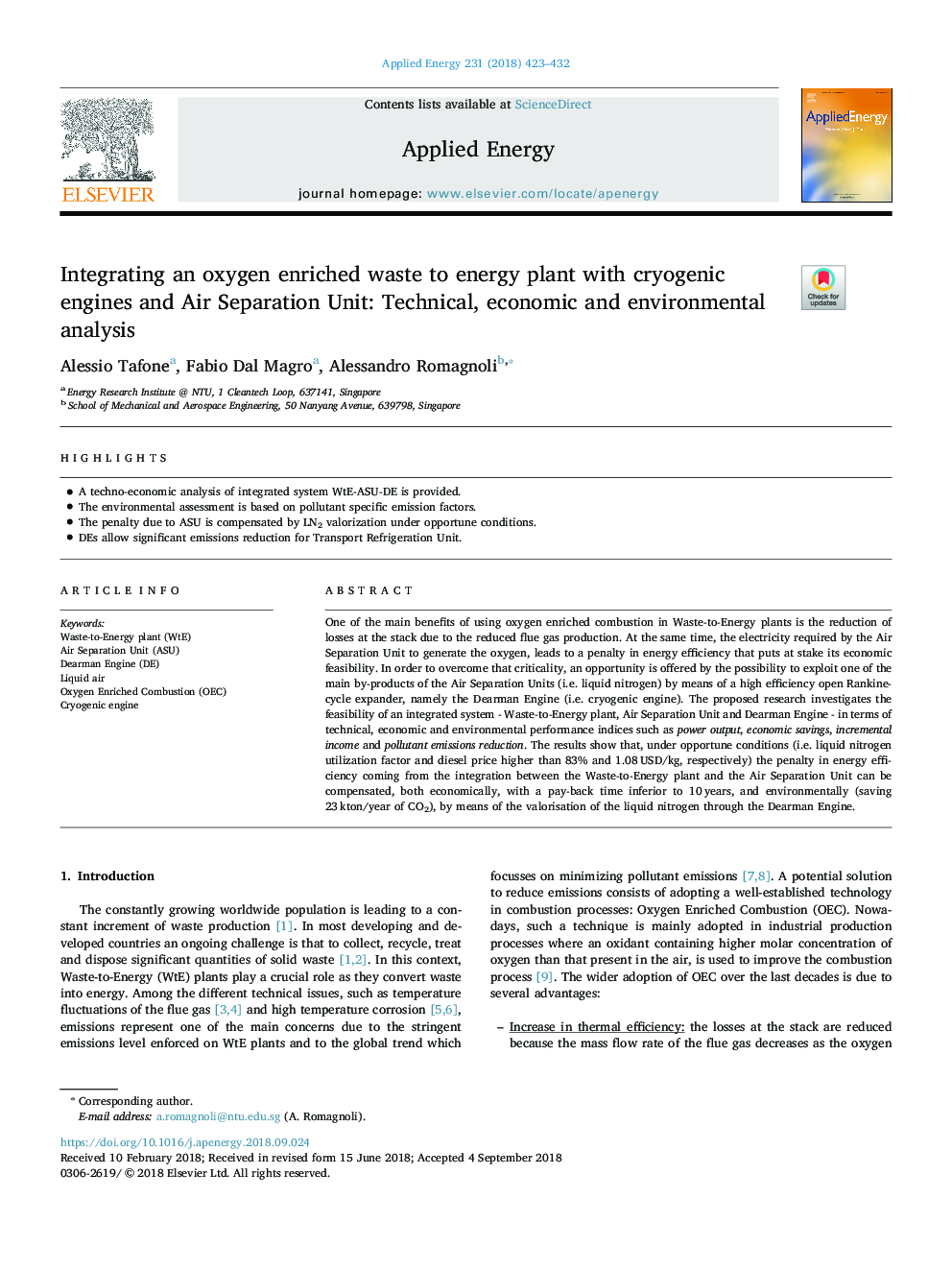| Article ID | Journal | Published Year | Pages | File Type |
|---|---|---|---|---|
| 10225280 | Applied Energy | 2018 | 10 Pages |
Abstract
One of the main benefits of using oxygen enriched combustion in Waste-to-Energy plants is the reduction of losses at the stack due to the reduced flue gas production. At the same time, the electricity required by the Air Separation Unit to generate the oxygen, leads to a penalty in energy efficiency that puts at stake its economic feasibility. In order to overcome that criticality, an opportunity is offered by the possibility to exploit one of the main by-products of the Air Separation Units (i.e. liquid nitrogen) by means of a high efficiency open Rankine-cycle expander, namely the Dearman Engine (i.e. cryogenic engine). The proposed research investigates the feasibility of an integrated system - Waste-to-Energy plant, Air Separation Unit and Dearman Engine - in terms of technical, economic and environmental performance indices such as power output, economic savings, incremental income and pollutant emissions reduction. The results show that, under opportune conditions (i.e. liquid nitrogen utilization factor and diesel price higher than 83% and 1.08â¯USD/kg, respectively) the penalty in energy efficiency coming from the integration between the Waste-to-Energy plant and the Air Separation Unit can be compensated, both economically, with a pay-back time inferior to 10â¯years, and environmentally (saving 23â¯kton/year of CO2), by means of the valorisation of the liquid nitrogen through the Dearman Engine.
Keywords
Related Topics
Physical Sciences and Engineering
Energy
Energy Engineering and Power Technology
Authors
Alessio Tafone, Fabio Dal Magro, Alessandro Romagnoli,
